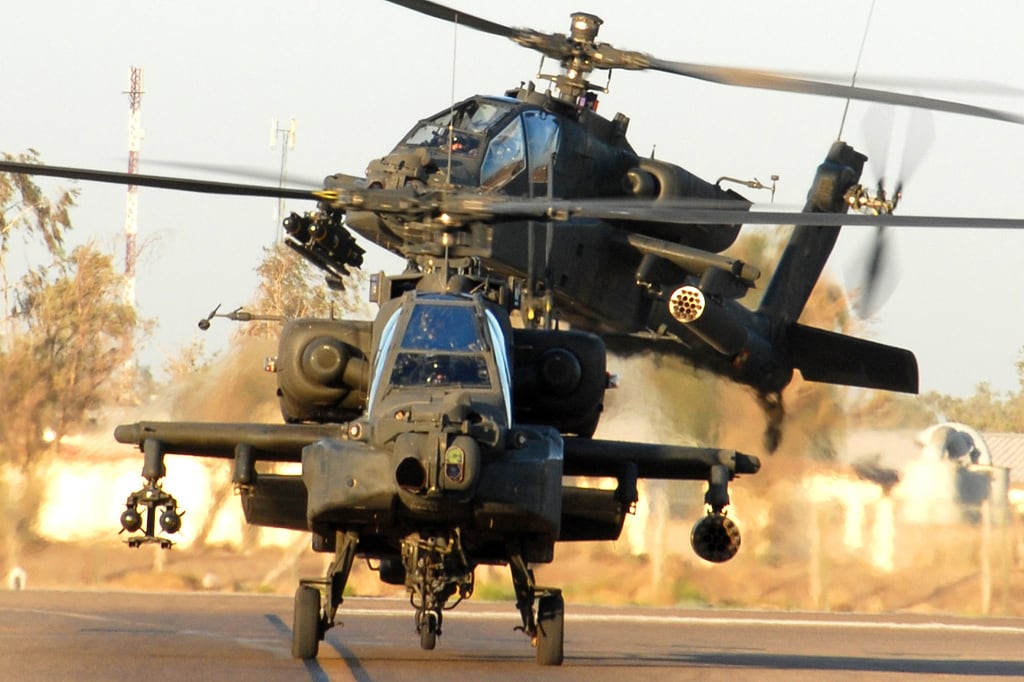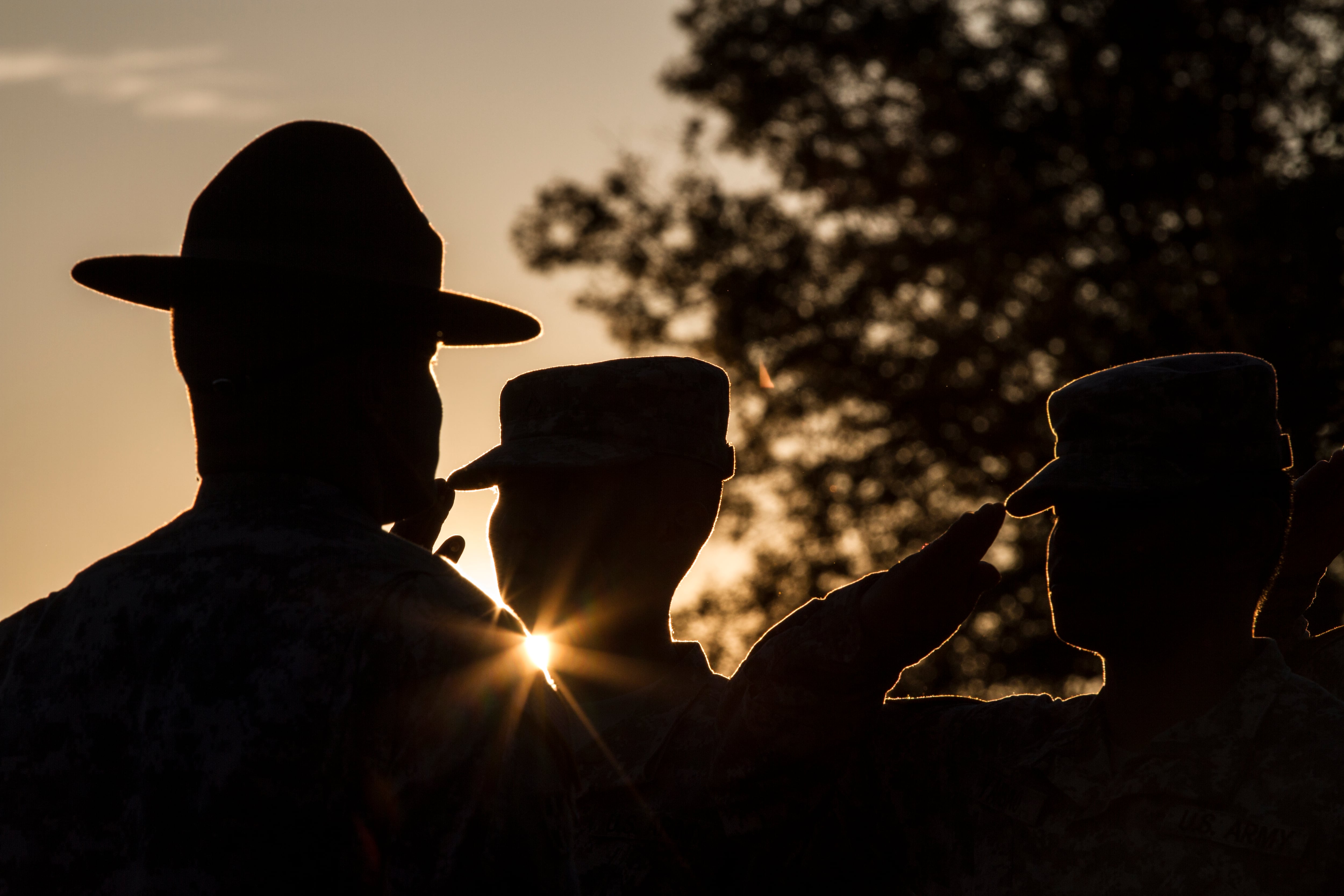A Defense Department study of the Army's controversial Aviation Restructuring Initiative found the service's plan saves more money and presents less "risk" compared with the National Guard's proposed alternative, according to findings obtained by Army Times.
The study by DoD's Cost Assessment and Program Evaluation office found:
- The ARI manages high demand with a smaller fleet. However, it is not sized for prolonged stability operations.
- The Guard alternative provides more crews and units with less disruptive force structure changes, but some units would only be partially equipped.
- The Guard alternative costs $89 million to $176 million more annually. It also has a higher one-time cost; $570 million compared with $77 million for ARI.
- The Guard's proposal, which would include multi-component AH-64 Apache battalions, presents tempo and training risks. Frequent Guard deployments would put high stress on the force during peacetime, and the proposal calls for a training schedule more aggressive than what was conducted during the wars in Iraq and Afghanistan.
National Guard Bureau officials declined an interview request from Army Times for this story.
"The Army National Guard is working closely with the Army and National Guard states to implement the Army's Aviation Restructure Initiative, including plans to transfer 48 Apaches to the active component in 2016 as outlined in the 2015 National Defense Authorization Act," National Guard Bureau spokesman Rick Breitenfeldt said in a statement.
The Army's aviation restructuring initiative is a five-year plan to streamline the service's aviation assets amid tightening budgets.
The plan calls for the Army to cut three of its 13 active-duty combat aviation brigades. The reserve component would retain 12 aviation brigades – 10 in the Guard and two in the Army Reserve.
The Army also will eliminate its fleet of the OH-58 Kiowa Warrior helicopter and use the Apache to fill the Kiowa's reconnaissance and scout role.
The Army would pull Apaches from the Guard inventory to fill the gap, and, in turn, provide the Guard with UH-60 Black Hawk helicopters. This part of the plan has been controversial for many Guard advocates, but Army officials have said it's necessary to save money and retain a ready, effective aviation force.
The ARI also calls for the Army to replace its TH-67 training helicopters with dual-engine LUH-72 Lakotas.
The ARI calls for 20 Apache battalions in the active component, according to PowerPoint slides put together by DoD CAPE. The Guard alternative would have 18 Apache battalions in the active Army, two in the Guard and four that are multi-component.
This leaves two of the Army's divisions with only one attack battalion, said Col. John Lindsay, director of aviation for the Army G-3 (operations).
"Assuming the Army accepts the National Guard alternative as viable, it does not meet the requirement for training and capacity that the Army needs in support of its BCTs and divisions," Lindsay said.
The Army has training requirements at the combat training centers, at home station and in locations around the world, Lindsay said.
"When you consider a multi-component counter-proposal, you have to envision that a National Guard attack reconnaissance battalion is going to be required to support that optempo," he said. "Not only that, but they're going to have to do it at the locations where the active component units are located or where the combat training centers are. It would require the commitment of a larger number of reserve component personnel on duty for greater lengths of time, and it requires movement across significant space."
In addition, four of the battalions would have 18 Apaches instead of the standard 24, Lindsay said.
The Guard's proposal gives the Army a 20 percent increase in capability for a modest increase in cost, said Maj. Gen. Bob Livingston, the adjutant general of the South Carolina National Guard.
"Our battalions are quite capable of mobilizing in time to meet the operational needs of the Army," said Livingston, who has an Apache battalion in his state. "Our people want to serve their nation, and they understand the obligation they take."
The Guard has traditionally been the depth of the nation's combat forces, Livingston said.
"The big concern all of us have in the National Guard, as we look at the ARI plan, is we don't think it is right for the nation," he said. "There are going to be unanticipated contingencies. The enemy has a vote."
The Army is limited by a requirement to cut its Apache fleet to 690, Lindsay said.
"690 has been a constraint for the Army," he said. "It's the number of aircraft that are part of our structure and what we have to work within."
The ARI enables the Army to "use the 690 to build the most capable force," said Col. Geoff Crawford, chief of transformation for Army G-3 aviation.
If the ARI goes as planned, the Apache transfer is scheduled to be complete by 2019.
The initiative then calls for the Army to upgrade its Apache fleet to the AH-64E by 2028. Most of the active Army Apaches and all of the Guard's Apaches are D models, and the Army will have a mixed fleet of D and E models for five or six years.
The Army is using a remanufacturing process to upgrade its Apaches at $20 million each, Lindsay said. A new AH-64E would cost $35 million to $40 million, he said.
The Army is limited by the capacity at the Mesa, Arizona, facility that does the work, as well as how much money it has available for the remanufacturing process, Lindsay said.
"That's what this has been about," he said, adding that the ARI is not a case of active-duty versus reserve component. "It's about making choices, building the best force possible within fiscal constraints."
Cost isn't the only factor to consider, Livingston said.
"We talk depth, we talk cost, and those are very important things, but the American people have never failed when they decided they wanted to do something," he said. "If you want to send a message to our adversaries, you mobilize your National Guard and Reserve. That is such an important part of going to war, and that's bringing the American people along."
Another concern the Army has is how long it takes to prepare an attack battalion to deploy, Lindsay said.
"It's relatively quick to turn an active component force," he said. "The expectation in the reserve component side is there's going to be a much greater period of time to generate combat power."
The South Carolina Guard's 1-151st Attack Reconnaissance Battalion just completed a brigade-level exercise, and it can be "ready in 30 days," Livingston said.
The Guard regularly conducts large-scale, combined state exercises, Livingston said.
"We're doing gunnery, we're doing the company exercises," he said. "Interstate cooperation really gives us large level exercises that are so critical to make us viable for the national mission."
The Army – along with the Defense Department – will continue to work with the Guard and with the governors on the ARI, Lindsay said.
CAPE's findings were shared with the Council of Governors in December, he said.
"This is an example of sharing more information about the inner workings of the decision-making process with our leaders across the country," Lindsay said. "I think we can expect continued engagement between the Council of Governors and [DoD] in the future."
The Army continues to plan for the execution of the ARI, Lindsay said.
The 2015 defense authorization bill calls for a national commission to study the Army's overall structure as well as the transfer of Apaches from the Guard to the active Army.
"We remain prepared on the Army staff to support in any way possible the requirements for information and analysis for the national commission," Lindsay said.
The commission, which has not been formed, is expected to submit its recommendations next February.
"I personally think studying history, studying our capabilities, knowing our ability to mobilize very quickly, knowing our ability to sustain a high optempo, I think the commission will find a very valid and strong reason to leave a substantial attack capability in the National Guard," Livingston said.
In the meantime, the Army is not allowed to transfer any Apaches in fiscal year 2015, Lindsay said.
It is, however, authorized to transfer 48 Apaches from the Guard between Oct. 1, which is the start of fiscal 2016, and March 31, 2016, he said.
"It's going to go very quickly, and we are actively working on the necessary plans and orders to execute the transfer in accordance to the provisions in the National Defense Authorization Act," Lindsay said. "After that, we're going to continue planning for potential implementation of ARI beyond that. You have to. We can't wave a magic wand and move all the aircraft around the Army. We have to prepare facilities, we have to transfer equipment, we have to ensure personnel are scheduled for training."
Even as the Army awaits the national commission's recommendations, "we have already crossed the Rubicon with our divestment of the OH-58," Lindsay said.
The Army has stopped flying the Kiowa Warrior at Fort Rucker, Alabama, and it is in the process of inactivating some of its Kiowa squadrons, he said.
"What we're counting on with these 48 aircraft is the ability to convert our reconnaissance squadrons from OH-58 structures to the AH-64 structure," he said. "Short of that, we're not going to have that capability available for either BCT or division level training or deployment."
Michelle Tan is the editor of Army Times and Air Force Times. She has covered the military for Military Times since 2005, and has embedded with U.S. troops in Iraq, Afghanistan, Kuwait, Haiti, Gabon and the Horn of Africa.





